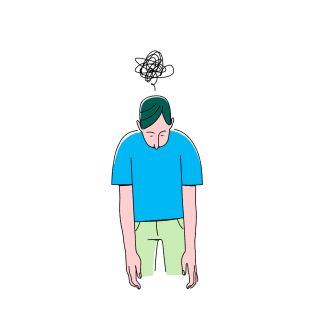Suicide
The Black Box of the Suffering Mind
Why can't we read the thoughts of individuals with mental illness?
Updated January 16, 2024 Reviewed by Michelle Quirk
Key points
- Losing a friend or relative to suicide leaves survivors wondering: What could I have done?
- Those who study the mind know this: The mind is a black box, and we are limited in our capacity to read it.
- Acknowledging our limitations is humbling and incentive to push to help those with mental illness.
A student of mine died by suicide some months ago. He had posttraumatic stress disorder (PTSD). In the emotional memorial service on campus, his dear family and friends shared their overwhelming sentiments:
“How did we not know he was suffering so? How did we not see this coming so we could stop him?”

Every year, more than 700,000 people worldwide die of suicide, according to the World Health Organization.1 The recent data from the U.S. Centers for Disease Control and Prevention showed that the suicide rate reached its highest point in 80 years.2
Survivors are left to struggle with a tangle of agonizing emotions, including guilt, confusion, rejection, and shame. They replay conversations repeatedly to pinpoint something the person said that would have prompted them to intervene.
But they often never turn up a clue. Because it wasn’t what they didn’t hear that failed them; it was what they couldn’t see: the inner thoughts and inclinations of others, even our most faithful friends and closest family members.
Mirroring the Mind
You see, we are black boxes to each other. It’s a missed stitch in our fascinating brains. Still, it presents an obstacle in our duty as members of society to listen for—and try to staunch or, better, prevent—the pain of others.
The 20th-century Austrian philosopher Ludwig Wittgenstein was occupied with human communication. Years ago, he suggested that conveying what you mean requires creating in the mind of another the mirror image you have in yours.
Simple, you think?
Indeed, when describing a new piece of furniture in detail, you may be able to create a reasonably accurate image in another’s mind.
It is more difficult when you try to convey a thought or emotion. Perhaps, for example, you tell a friend you are jealous of someone’s achievement. That invokes their experience of feeling envy, even if it differs from yours. At least you have related a familiar concept that they can replicate subjectively.
But how would you imprint the taste of lychee on someone who has never savored one? The feeling of a broken heart to someone whose heart is still intact? The despair that steers one’s thoughts and actions to self-harm?
A Glimpse Into the Soul

When we can’t relate someone else’s experience to one we have had ourselves, or when communication falls short, attempts to be privy to complex mental states, such as those typical of psychiatric disorders, are futile.
In cognitive neuroscience, there is a concept called “theory of mind” (ToM). It refers to our ability, or lack of it, to understand the intentions and mental state of others. It is a significant shortcoming of our science that psychologists, neuroscientists, psychiatrists, and other students of the human mind cannot tell how to gain first-hand experience vicariously.
But, just like astronomers push ahead to reach the depths of the universe, we persist in how to get a better glimpse into the souls of our fellow humans while accepting our limitations in experiencing others reliably and in high fidelity.
Several creative attempts to crack the “black box” are in very early stages. One uses virtual reality environments to allow one to experience another’s reality, such as living in the body of someone with a different gender orientation.
In clinical practice, asking patients for nonverbal reports can be highly illuminating. I’ve had some experience with this as a researcher into the cyclical thinking patterns of people with depression and anxiety. Yet, faced with patients’ drawings of their ruminations for the first time, I was surprised, even horrified, by the fierce and paralyzing emotions conveyed on paper, like scratches of the mind.
When a dear friend with depression (and excellent drawing abilities) illustrated her inner self in different negative moods, I could not fathom, despite all my empathy and love for her, how such a representation could exist inside a brain that I thought operated pretty much like mine.
Accepting Our Limits, Reaching to Overcome Them
I do not mean to say that we are distant and limited, even insensitive, in our relationships. We are doing the best we can with what we have and what we have experienced. Certainly, the infinite demonstrations of empathy and caring surrounding us provide hope—and the impetus to try to do better.
But what are we to do when, listening as well as we can, our reception signal is faulty, muffled, or distorted? Where does this leave us?
This is where: with a deep and humane urge to help others but bearing handicaps that we must recognize and confront. By accepting, with humility, that we cannot perfectly understand the experience of others, we have a base camp to begin our ascent toward more genuine and perceptive listening.
If you or someone you love is contemplating suicide, seek help immediately. For help 24/7, dial 988 for the 988 Suicide & Crisis Lifeline, or reach out to the Crisis Text Line by texting TALK to 741741. To find a therapist near you, visit the Psychology Today Therapy Directory.
References
1. World Health Organization. (2023, August 28). Suicide.
2. Millman, J. (2023, November 29). Number of suicides reached record level last year, CDC says. Axios.com. Retrieved December 18, 2023.




